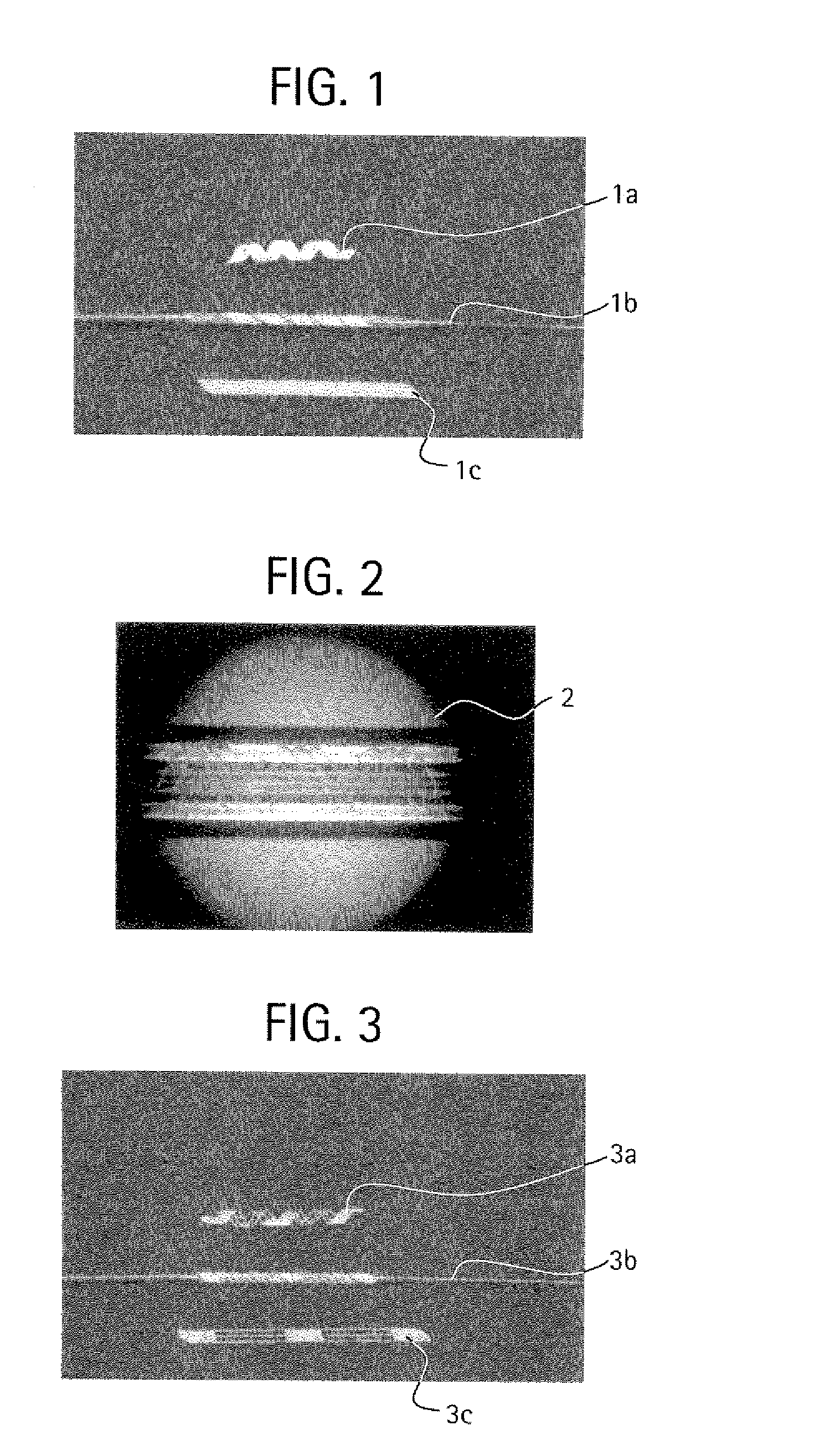Method of forming a bioabsorbable drug delivery devices
a bioabsorbable and drug technology, applied in the direction of filament/thread forming, surgery, coating, etc., can solve the problems of adversely affecting the radial strength of such stents, the pitch or angle of the longitudinal strut wraps around the tubular stent in the helical configuration is typically limited, and the polymer processing options are significantly limited. , to achieve the effect of increasing the effective drug delivery capacity and increasing the radiopacity
- Summary
- Abstract
- Description
- Claims
- Application Information
AI Technical Summary
Benefits of technology
Problems solved by technology
Method used
Image
Examples
example i
[0073]Preparation of PLA / PGA 95 / 5 Films with Sirolimus from Chloroform[0074]PLA / PGA 95 / 5 resin was obtained from Purac Inc., with an intrinsic viscosity of about 2.2.[0075]A summary of a film making protocol is given below:[0076]Prepare PLA / PGA stock solution at 4.3% by weight by dissolving PLA / PGA in chloroform and tumbling the solution overnight at room temperature.[0077]Add sirolimus in desired amounts of 0 to 30% to the stock solution.[0078]Pour a predetermined mass of the PLA / PGA and drug into a mold positioned in the center of a glass plate (12″ by 12″).[0079]Cover the mold to reduce the rate of chloroform evaporation.[0080]Slowly dry the films overnight at room temperature in a nitrogen rich environment.[0081]Release the films from the glass plates.[0082]Dry further to remove residual solvent under different conditions as described above.[0083]Other post treatment of the films including annealing and orientation at different temperatures can be performe...
example ii
Polymer with Drugs / Agents and Radiopaque Material
[0087]Preparation of PLA / PGA (95 / 5) Films with Sirolimus and Radiopaque Agents[0088]PLA / PGA 95 / 5 and 85 / 15 resins were obtained from Purac Inc., with an intrinsic viscosity of about 2.2 and 2.3, respectively. Barium sulfate of different particle size (1 and 0.1 microns) was obtained from Reade Advanced Material and Sachtleben Corporation. Bismuth subcarbonate and bismuth oxide were obtained from Spectrum and Nanophase Technologies Corporation, respectively.[0089]In general, the radiopaque agents are added after the preparation of the PLA / PGA stock solution prepared above as in Example I. The formation of the films then generally continues as otherwise set forth in Example I except as otherwise detailed herein with respect to the various radiopaque agents. The radiopaque agents may be barium sulfate or bismuth subcarbonate. The radiopaque agents are added to the PLA / PGA solution by sonication, by high speed mixing, or by tumbling. Soni...
example iii
Preparation of Polymer Films with Barium Sulfate Using Solvent Binary Mixtures
[0148]The materials used throughout Example III are summarized below. PLA / PGA 85 / 15 and 95 / 5 were obtained from Purac Inc., with an intrinsic viscosity of about 2.2 and 2.3, respectively. Barium sulfate was obtained from Reade Advanced Material.
[0149]Preparation of Casting Solutions
[0150]Pure PLA-PGA Casting Solutions[0151]Four pure polymer casting solutions were prepared, two using the 95:5 grade PLA / PGA and two using the 85:15 grade PLA-PGA as shown below:[0152]PLA-PGA (95:5) dissolved in a 50:50 w / w % mixture of dioxane / acetone and dioxane / ethyl acetate.[0153]PLA-PGA (85:15) dissolved in a 25:75 w / w % mixture of dioxane / acetone and dioxane / ethyl acetate.
[0154]The table below summarizes the weights used to prepare the casting solutions.
Composition of Barium Sulfate-Containing Casting Dispersions% by Weight ofIngredientDifferent IngredientsBarium sulfate1.391.41PLA-PGA (85:15)5.035.01Dioxane:acetone (25:7...
PUM
| Property | Measurement | Unit |
|---|---|---|
| temperatures | aaaaa | aaaaa |
| length | aaaaa | aaaaa |
| length | aaaaa | aaaaa |
Abstract
Description
Claims
Application Information
 Login to View More
Login to View More - R&D
- Intellectual Property
- Life Sciences
- Materials
- Tech Scout
- Unparalleled Data Quality
- Higher Quality Content
- 60% Fewer Hallucinations
Browse by: Latest US Patents, China's latest patents, Technical Efficacy Thesaurus, Application Domain, Technology Topic, Popular Technical Reports.
© 2025 PatSnap. All rights reserved.Legal|Privacy policy|Modern Slavery Act Transparency Statement|Sitemap|About US| Contact US: help@patsnap.com



